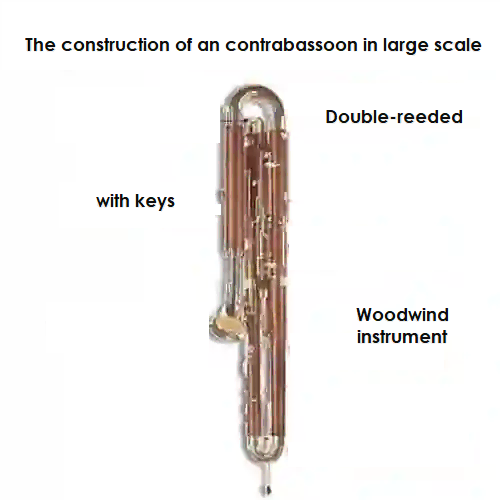Construction and function » Contrabassoon » Philipp Dangas
Construction and function of the Contrabassoon
The consistently conical, relatively narrow-bore contrabassoon tube, including the mouthpiece and the A bell, has a total length of 5.93 m.
As with the normal bassoon , the sound opening is directed upwards without any special expansion. The special A-lintel, which is placed on top of the upward-pointing lintel, lengthens the tube with a further bend of 180°, so that the conically widened opening is therefore directed downwards.
The double-reed mouthpiece, which is also attached to a metal tube (the so-called "S"), is correspondingly larger than that of the normal bassoon. The key system roughly corresponds to that of the normal bassoon, with the position of the keys and finger holes changing as a result of the quadruple kinking of the reed.
Download size: 354 kilobytes
Table summary of the functional principle of the woodwinds
Table with key data on the functional principle of the woodwinds. There are mouthpieces, reeds, tone holes and flaps briefly described. In addition, the term overblowing technique is explained

Internal search function
| Name | Value | Delete |
|---|